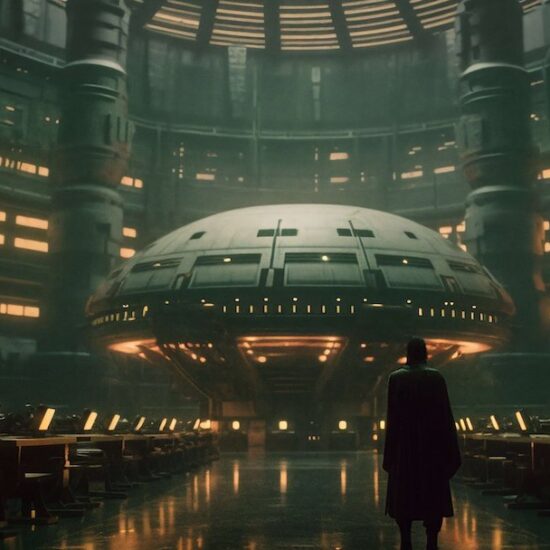
What is visual comedy?
Comedy is a means to create laughter and amusement. The word comedy was derived from Greek, meaning to revel or enjoy. Comedy can come in all shapes and forms; as far as it can create a laugh, it can be counted as one.
Movies have been around for more than a century. The comedy genre, too, took off soon. The film, L’Arroseur Arrosé (1895), was about a young boy who played a prank on a Gardner. Even though it was only 60 seconds long, it made audiences burst to laughter, and it can be considered one of the earliest comedies on the big screen.
Although, comedy was not new to audiences, the earliest recorded comedic dramas were presented in Greece in B.C 426 by the playwriter Aristophanes, who is considered the father of comedy. Comedy evolved as time went on. People burst into laughter watching plays, mimes, puppetry, and Circus. But the inception of movies opened new dimensions to comedy. There was an unlimited potential to create humor from visuals.
Visual comedy can be defined as jokes that can be conveyed through visuals and often without the usage of words. The first cinemas did not have the luxury of dialogues, so the storytelling had to be solely done visually.
The earliest form of visual comedy was slapstick. When a character slaps another, a wooden tool, called slapstick, is used to produce the sound. It had two pieces of wood attached, and it was clapped to create a comical striking sound. The movies used this technique a lot; hence, funny sequences involving physical activities are referred to as slapstick.
Charlie Chaplin and his toothbrush mustache
Charlie Chaplin is widely recognized across the planet and very well known for his mastery of comedy. He was the face of cinema for almost half a decade, directing and acting in famous movies like the Circus, the city lights, The modern times, and the list goes on. In his illustrious career, he created around eighty movies, including feature and short films.
Released in 1921, The Kid was a pivotal point in Chaplin’s film carrier. The movie was directed by himself, and no one had seen something like it ever before. Until then, movies were either too serious or plain comedies. The Kid was a dramedy, and rightly so; it came with an intertitle that was “A picture with a smile and perhaps, a tear.” This style can be seen in all his works.
For Chaplin, comedy was a vessel to convey emotions. Even so, it was not a mere vessel, he had put a lot of effort into crafting scenes that had made people laugh hard, and his works continue to do so to this date. There is a unique style that Charlie Chaplin had in his movies. He was heavily inspired by clowns in the Circus, but he wanted to give more depth to his characters.
He intertwined slapstick and realism together to create his brilliant works. This made the audience relate to the character. His actions made us laugh, and his tears made us weep. He used all aspects of filmmaking to achieve this engagement with the viewers, and visuals were a predominant part of it.
Mannerism
He was very physical in his acts, as the cameras of the time were not great at capturing minor cues. This led to Chaplin using many of his signature moves, like his walk with the stick, his wicked running with the toes pointed to each side, and a constant sense of uncertainty in his actions.
Costume
His attire was as popular as the man himself. His bowling hat and oddly fit jacket represented the elite, but when we looked further down, his pants were torn, and his shoes much bigger than he needed. This made the audience laugh, but it also told about the situation of people who lived in the post-war period.
Sounds
At the start of his career started, all movies were silent (they still had sounds to convey and intensify emotions). But he did not introduce dialogues in his movies for another 13 years after the release of the first talkies, The Jazz Singer, in 1927. He was a master in using sounds to increase the impact of scenes but did not feel the need for dialogues until the Dictator in 1940.
This track set by Charlie Chaplin was followed by filmmakers for some time to come. Then in the early 70s, the movie Monty Python and the Holy Grail was released. It was a low-budget medieval period movie with the characters in a quest to find the holy grail and the absurd obstacles they are faced with in their travel. The film created a ripple in the movie world. A whole new style of visual comedy was introduced.
Monty Python and the comedy spoof
Terry Jones and Terry Gilliam co-directed the masterpiece, and astonishingly, it was their first ever feature film. The movie broke a lot of conventional making styles. It was one of the earliest forms of spoofs. The duo used a lot of liberty in their making, and it was very well received by the filmgoers. The movie had a very distinct style, and it stood out from the rest.

Spoof
Instead of the horses in the medieval era, they clapped coconuts to create trotting, and this was all happening inside the frame. So instead of a soldier riding a horse, you see a man limbing and a pawn following behind him, clapping two halves of a coconut.
Surrealism
The lines were read by the cast at times with no emotions ever so, and the camera, with a close-up angle, made humor from even the most serious dialogues.
Dark Humour
It would be almost impossible to count the number of deaths in the movie, but still, it acted as comic relief rather than a tragedy. Otherwise, the serious situation was staged light-heartedly to make the audience laugh.
How Wes Anderson Bottle Rocketed a new wave
In 1996 the movie Bottle rockets came out; the movie was not very well received at the box office. But the film was a launching pad for the genius director Wes Anderson. Anderson went on to direct nine more movies afterward and is showing no signs of stopping anytime soon. His movies had great emphasis on visuals, and all his films have a very distinctive style.

Image credits: Slidebazaar.com
Symmetry
Wes Anderson likes to place the subject in the exact center of the frame. This creates a very unnatural and comic feel to the shot. If there are multiple subjects, he balances them with great precision, almost making halves of the frame a mirror image.
Lines
He uses lines to draw the attention of the audience and uses this technique very well to induce humor.
Slow motion
He uses a lot of slow-motion cuts to create drama and comedy. This intensifies the scene and elevates it.
Shapes
Very much like the symmetry and the lines, Anderson uses shapes to his advantage. He even uses the shapes of the actors’ heads to emote the audience in ways he desires.
Conclusion
Comedy is a great way to engage your audience. When done right, it can be a great tool in movie making. Using visuals to induce humor is a skill that only a very few have mastered, but once under command, it can create magic in your works. There are other brilliant directors like Edgar Wright who have great skill in the visual medium of comedy. These directors have inspired countless creators across the world, and they have made us laugh with their genius.















